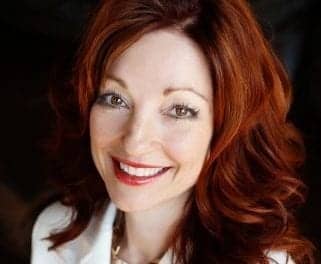The following is adapted from Gael Hannan’s November 8, 2011 blog in her The Better Hearing Consumer column found at hearinghealthmatters.org/betterhearingconsumer.
—David Kirkwood, HHM.org

Having escaped from the waiting room zoo, I am sitting in an examining room waiting to see my new ENT specialist. And hallelujah, it’s a real room, with a door. My previous ENT believed in the open office concept, a nightmare for patients with hearing loss.
Suddenly, the doctor strides into the room, white coat and a medical intern flapping behind him. Doc plops onto the stool in front of me and looks me in the eye.
(Good communication skills, hooray! But he’s an ear, nose and throat specialist; he should know how to talk with his hardof- hearing patients. On the other hand, I’ve been giving my family doctor some basic patient communication training, which she has now, after 8 years, almost completed. She’s proud of the fact that she no longer talks to my feet or other body parts during a check-up.) “So, what can I do for you today, uh, (looking at my papers), Mrs Hannan?”
“Well, I haven’t seen a specialist in a million years, and my audiologist thought maybe it was time I should. A lot of my friends have acoustic neuromas or other interesting stuff, and when I was a child a doctor did radiation on my ear. But I’ve never had an MRI, and I’m thinking maybe I should?” (My babbling trails off.)
“Mumble, mumble,” he says into my chart.
Doc doesn’t respond to my little attention-getting wave, so I lean sideways, downward and forward to make eye contact. “Sorry, doctor, I’m hard-of-hearing. Could you face me please?”
He gives me a blank look, then a little laugh-snort, “Yes you are, aren’t you? Sorry about that.” (We all laugh a bit, but I’m not sure if he’s sorry for my hearing loss or because he didn’t face me.)
“Okay, fine, an MRI it is. I’m-sure-there’snothing- wrong-you’re-coping-well-so-comeand- see-me-afterwards-probably-in-a-fewmonths.” Doc stands, nods, and sweeps out of the office, the intern catching his wake. About 45 minutes of waiting, 2½ minutes of consultation. I’m not complaining; I know there’s a shortage of doctors, with thousands of people who need help. I’m lucky to have access to good medical care. It’s just that during this short meeting, I had to spend more energy on my communication challenges than on discussing my medical issues.
Two months later, I’m at the hospital for my MRI. After I change into one of those attractive hospital gowns, the technician hands me earplugs to wear during the noisy procedure.
“I’m hard-of-hearing,” I tell her. “Are there any instructions I need to know before this starts?”
“We’ll tell you what to do during the test; you’ll hear my voice telling you when to breathe in, hold, and let it out.”
“No I won’t. My hearing aids will be out, and I will be functionally deaf.”
A blank look. “I’ll speak loudly, you’ll hear me.”
“No. I. Won’t. What do you do for other people who can’t hear?” I ask.
A blanker look.
“Hmmm, well, we’ll do our best. I’m sure it will be fine.”
“Hmmm, well, unless you have a little captioned TV screen in there, I will not understand what you are saying.”
She frowns, but asks me to put my things away and have a seat.
Grumpy, I put my hearing aids and other valuables into a locker and sit down in a tiny anteroom. I feel vulnerable, deaf, and half-naked. The technician seats two other patients, whom she has clearly told that I don’t hear, because they both smile at me, nodding, as if I were one step up from the village idiot. They talk about me—”poor thing, my aunt is the same way”—and I don’t bother to tell them I can read every word their lips make.
The technician reappears with a huge length of clear tubing coiled around her arm, and motions to me. I think, not on your life, woman! I’m here for an MRI, not an enema! My face must show my shock, because she cracks a smile. She mouths, “No, it’s okay; please come with me.”
In the large MRI room, she says, “None of us have ever done an MRI on a deaf person. I’m embarrassed that we didn’t have something in place. But let’s try this. We’ll tie the tubing around your wrist; when we yank it, you breathe in and hold it until the next yank, when you let it out.”
“What if you forget to yank the second time?” Her smile explodes into a laugh.
They slide me in, feet first, and throughout the procedure I can feel the MRI’s loudness. I dutifully respond to the jerking of my wrist, and thankfully, the tubing doesn’t break. That was my second worst fear, just after having the power go out while I’m entombed in MRI hell.
The happy ending? Nothing showed up on the MRI. But, while I am pleased at the technician’s practical solution, I’m surprised at the lack of MRI protocol for patients with hearing loss. Has no other hard-of-hearing or deaf person ever had an MRI in this major city hospital? Who would bluff through an MRI or other important medical procedures?
What do you think? Comment on Hannan’s The Better Hearing Consumer blog or e-mail her at .






